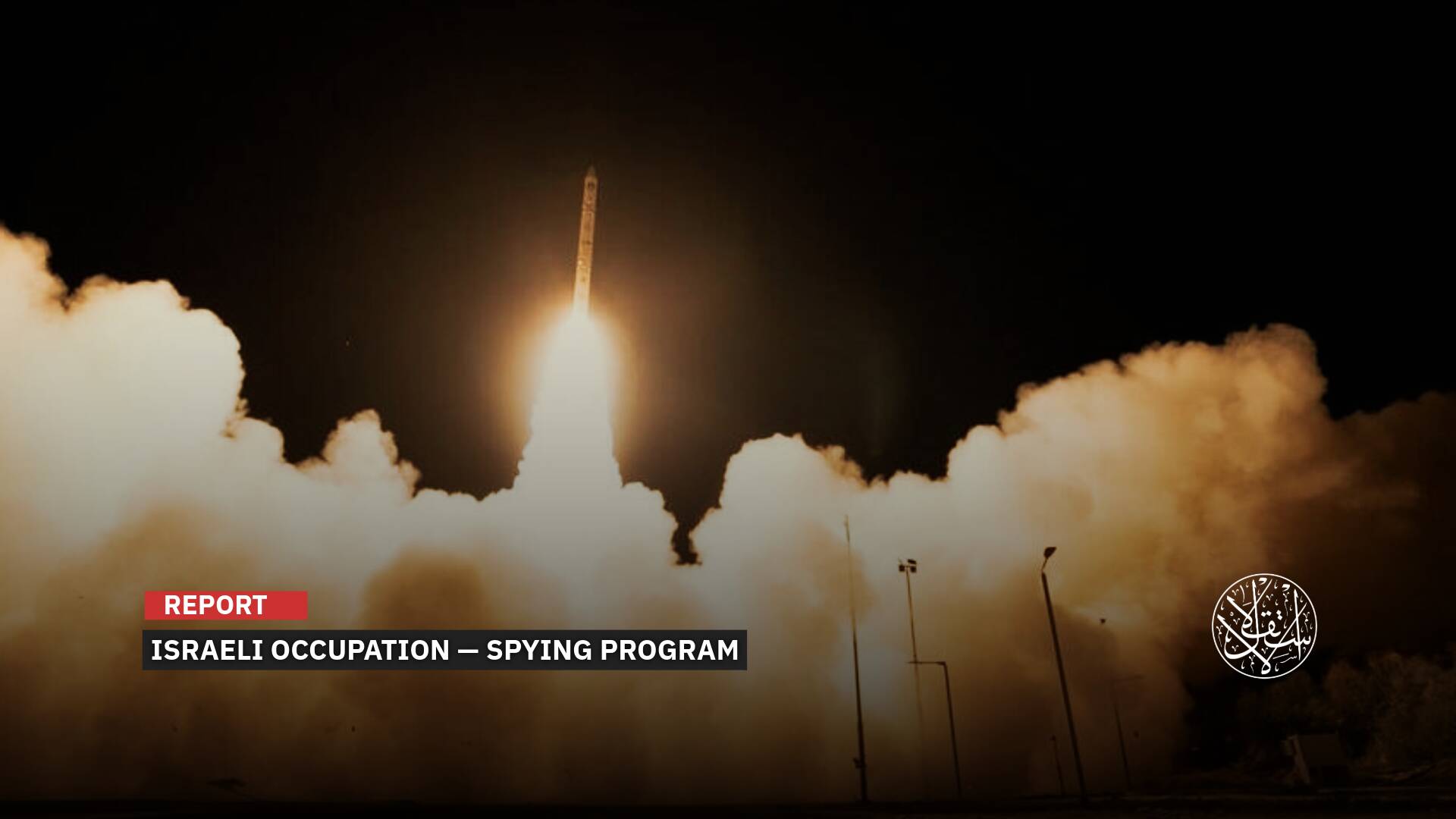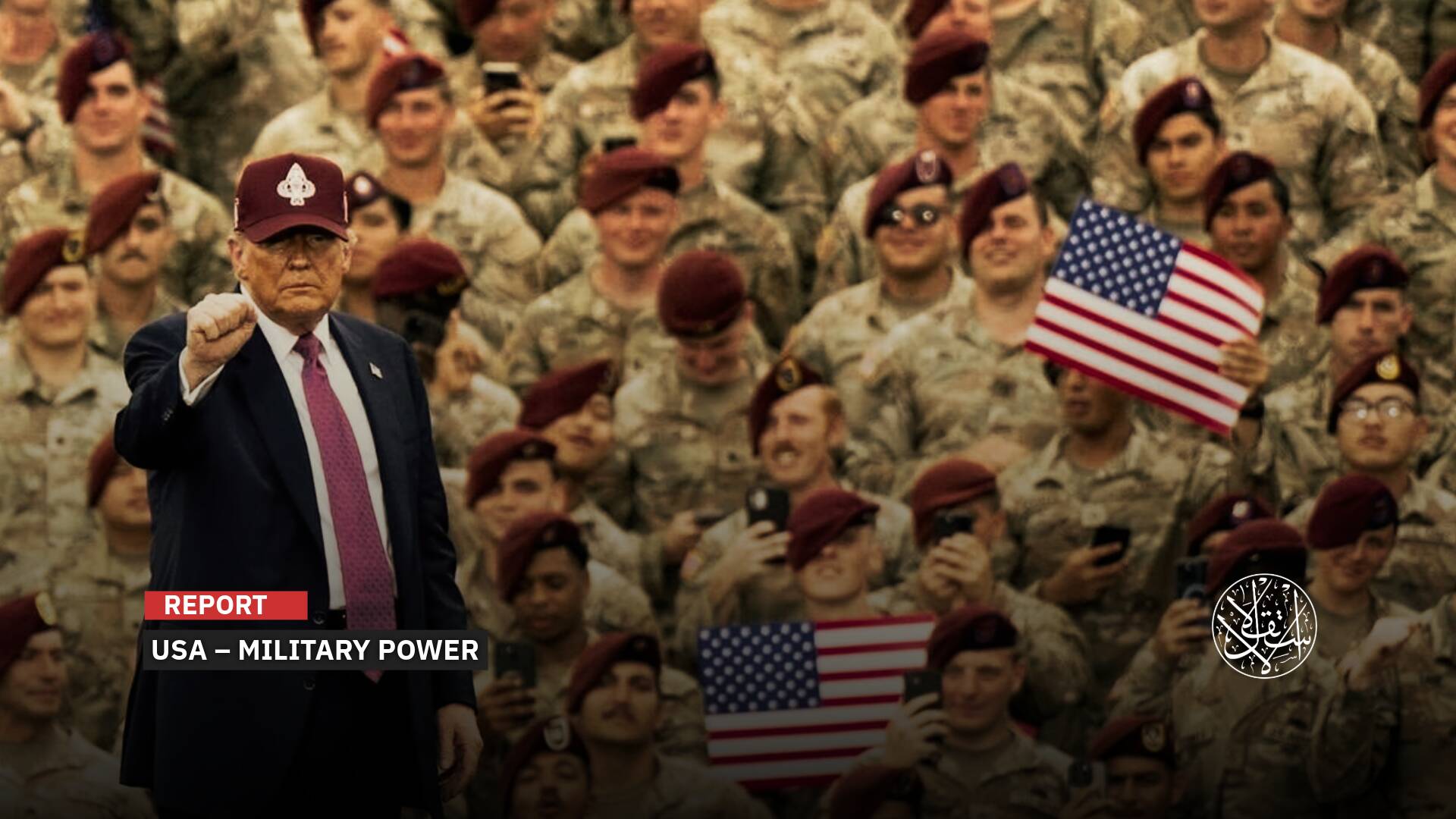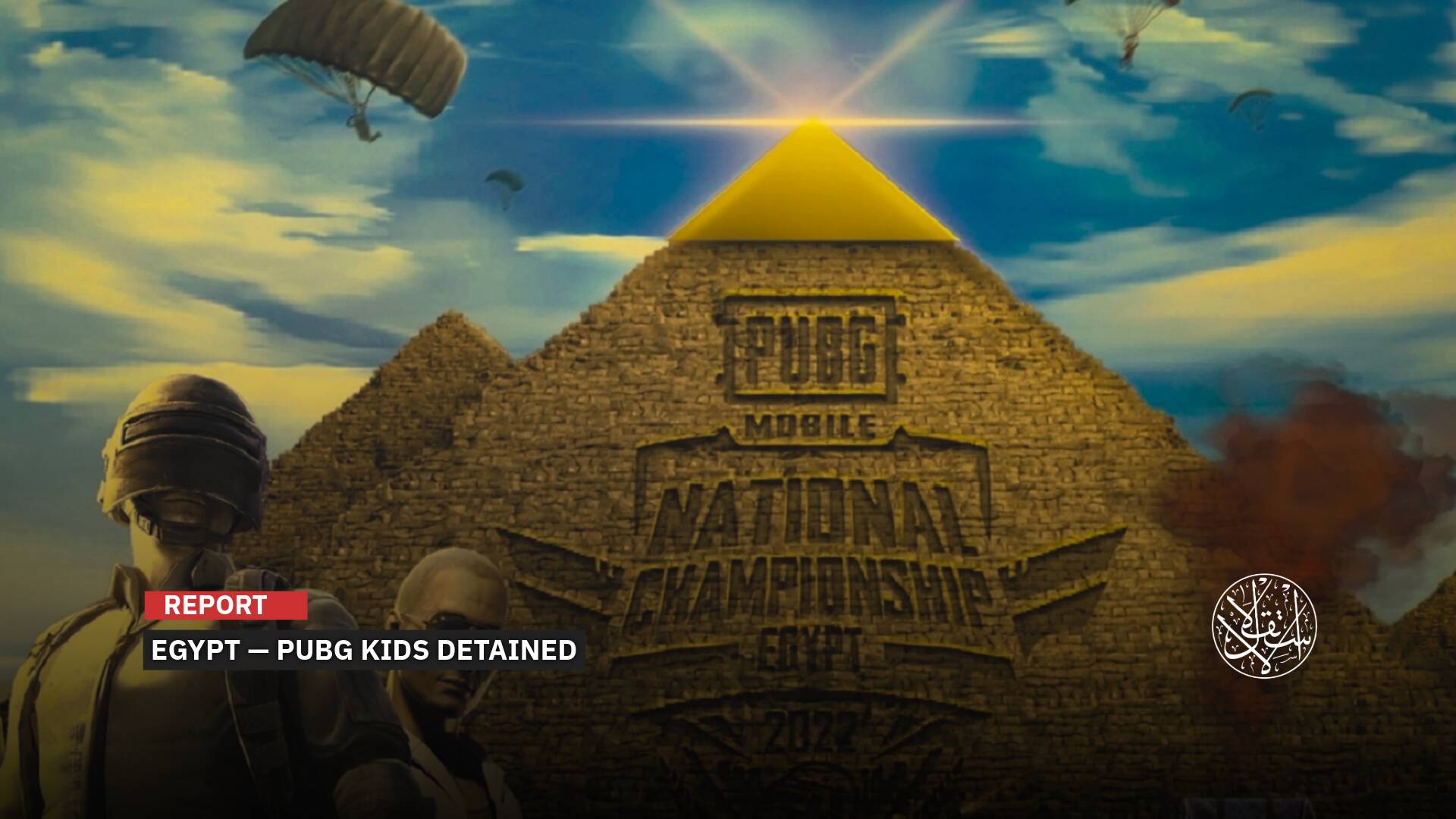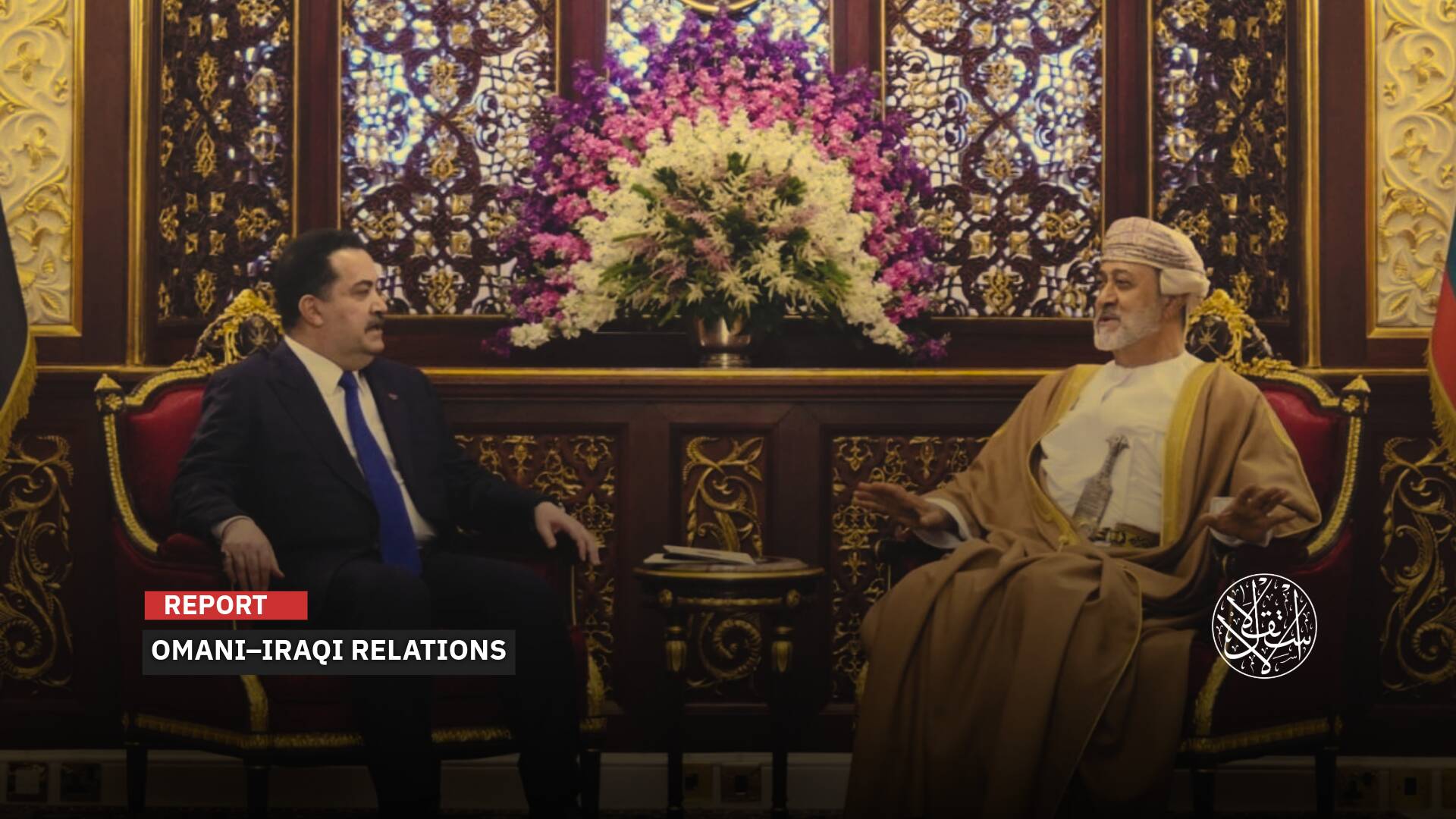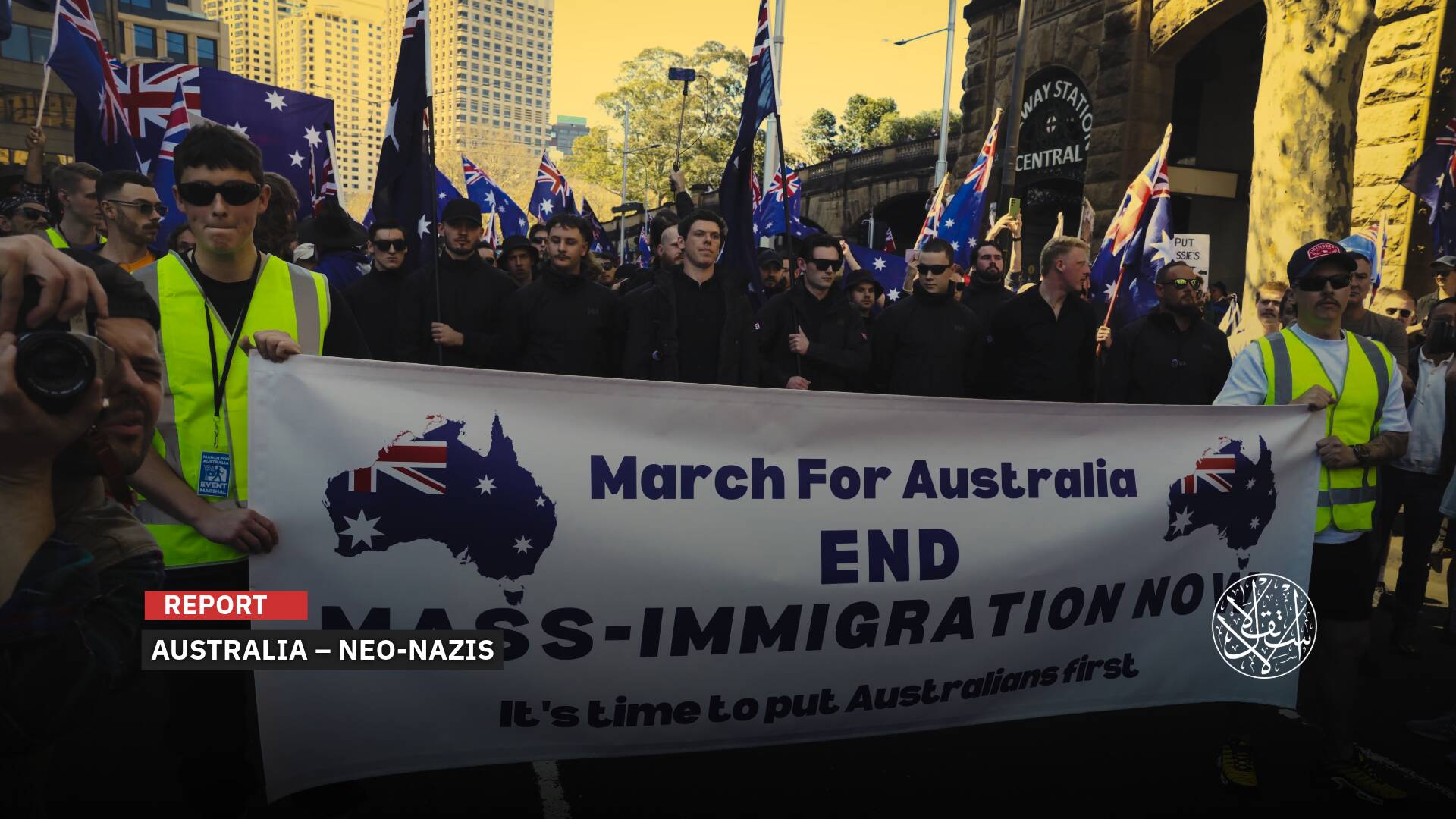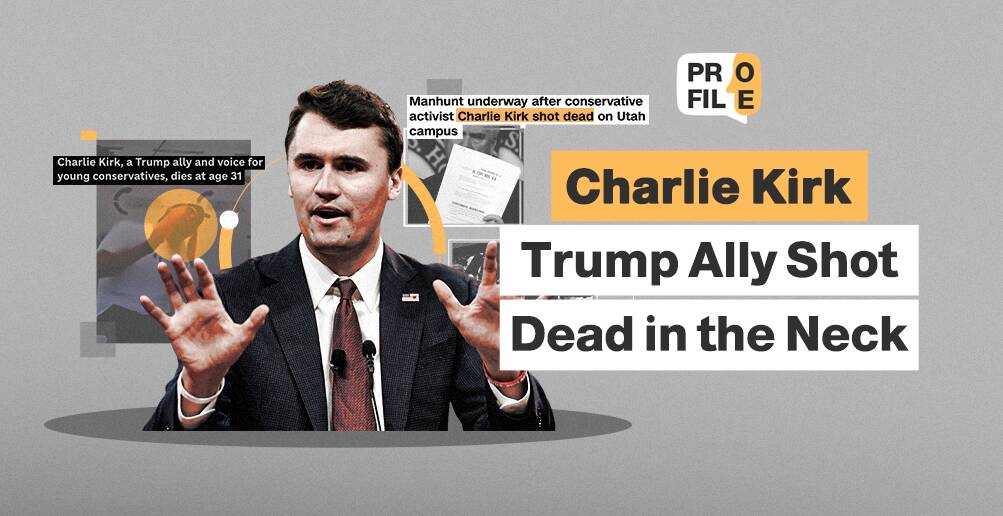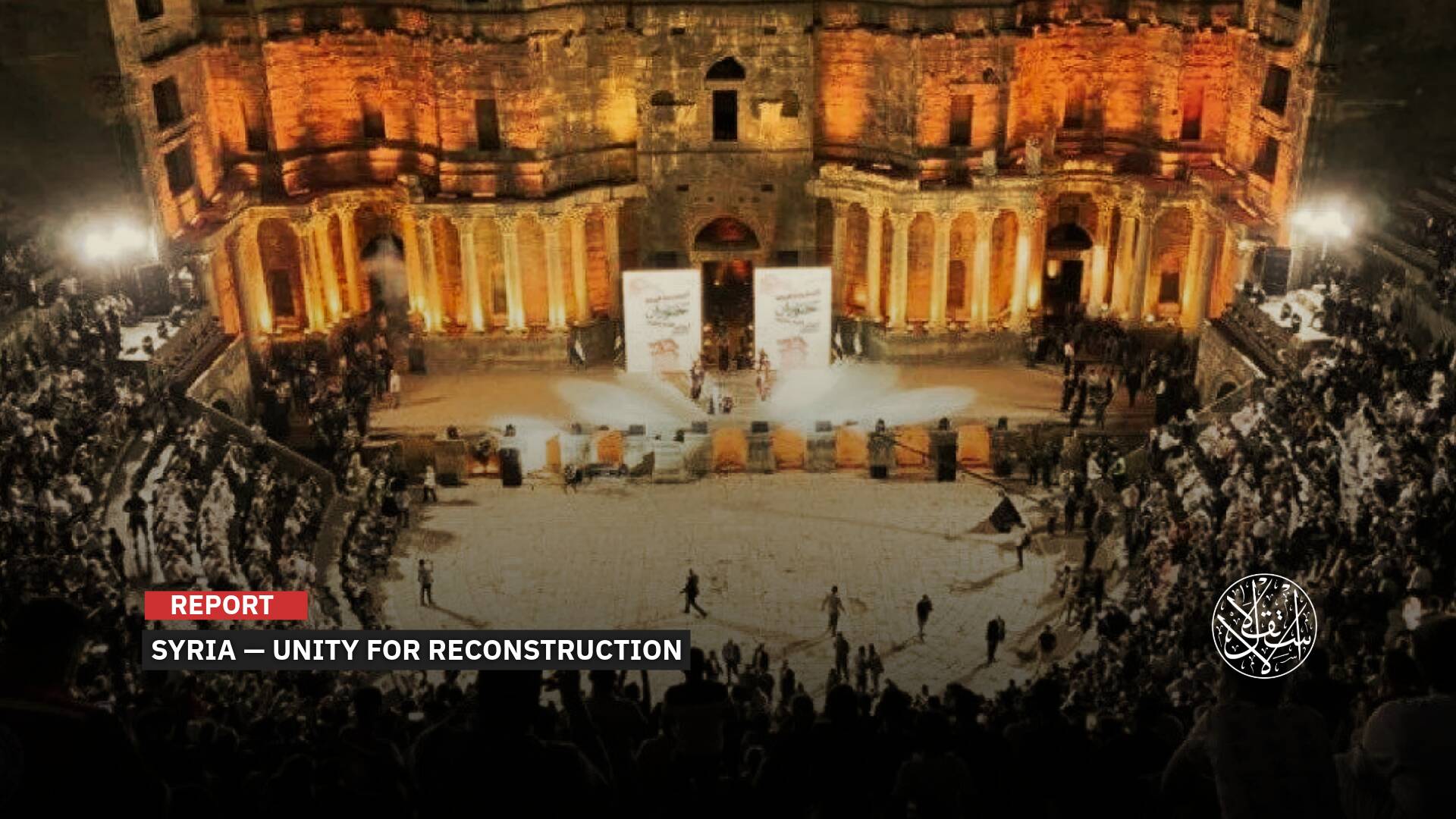Taking Shape: Inside ‘Deal of the Century 2’ Trump Aims to Push Through Saudi Arabia

Trump is touring the three Gulf countries: Saudi Arabia, the UAE, and Qatar.
As U.S. President Donald Trump arrived in Saudi Arabia on May 13, 2025, the outlines of what is being called “Deal of the Century 2” began to partially emerge during his tour of the three Gulf countries, Saudi Arabia, the UAE, and Qatar.
This time, the deal appears to center on economic agreements, regional arrangements, and security guarantees, with only limited relevance to the Palestinian issue, unlike his first deal in 2020.
Trump’s recent moves involving the Houthis, Iran, Syria, Turkiye, and to some extent Gaza, hint at a new geopolitical roadmap, what could be described as Deal of the Century 2—following the failed attempt at brokering a Palestinian deal during his first term.
These moves suggest that Trump’s ambitions in the Gulf are primarily focused on economic deals, not Palestine. The issue of normalization may be raised only in the context of ending what he called the brutal, savage war in Gaza, as the ongoing Israeli genocide leaves no room for peace talks or normalization.
Hamas’s decision to release U.S.-Israeli soldier Edan Alexander and send him to Qatar during Trump’s visit appeared to carry multiple messages. It sought to leverage the visit's momentum and the economic rewards Trump expects, in order to pressure Netanyahu into a full ceasefire.

Outlines of Trump’s Second Deal
Unlike the original Deal of the Century unveiled in January 2020 during Trump’s first term, which focused on a two-state solution for Palestinians and Israeli Occupation settlers, the second deal appears to completely sideline the idea of a Palestinian state.
“Israel” has made its position clear: “There will be no Palestinian state.” On May 10, 2025, Prime Minister Benjamin Netanyahu declared that “Tel Aviv” would annex 30% of the West Bank and that “you won’t hear about a Palestinian state,” noting that Trump has approved this plan.
Hints about the deal’s direction came from U.S. State Department regional spokesperson Samuel Werberg, who said on May 11 that Trump’s talks in Saudi Arabia, Qatar, and the UAE would focus on regional security, defense, energy, and investment.
This shift left “Israel” cold. The Israeli government had hoped to lead a “new Middle East,” as Netanyahu promised, leveraging gains against Hezbollah, Gaza, and Iran. But Trump’s approach strengthens the Gulf bloc and builds a counterweight in the region, prioritizing business over “Israel’s vision.”
Israel Hayom reported on May 11 that “Israel’s” military, Mossad, and Shin Bet are concerned about “potential damage to Israel's national security resulting from the growing distance between Israel and the United States.”
According to the paper, three key issues are driving Israeli Occupation’s anxiety: a possible U.S.–Iran nuclear deal, arms and economic agreements with Saudi Arabia, and the situation in Gaza, especially prisoner swaps that could lead to a ceasefire.
“Israel” fears that a new nuclear deal would allow Iran to retain the knowledge and tools to develop future nuclear capabilities. It would also release frozen funds, enabling Iran to rebuild its power and finance allied groups.
A second major concern involves the security agreements Trump is expected to strike with Gulf states. According to Israel Hayom, some of these deals “could threaten Israel's qualitative military edge.
Many Israeli analysts have long considered a Saudi civilian nuclear program a red line. But now they acknowledge that Trump appears ready to push forward with such a deal, without including “Israel” or requiring normalization as a precondition.
In The Guardian on May 11, political analyst Simon Tisdall wrote that while Trump believes he is reshaping the Middle East, it is actually the Gulf states that are now dictating U.S. foreign policy.
Gulf leaders, he said, have enough leverage to redirect Trump’s path, especially as he now relies on them more than on “Israel” or Europe as diplomatic partners, security allies, and financial backers.
“Trump knows he cannot afford to ignore the views of the Saudi crown prince, Mohammed bin Salman, and his Gulf counterparts on Gaza, Syria, and Yemen,” Tisdall said.
“They oppose war with Iran, as previously threatened by the US and Israel. Trump needs them as allies in his trade and tariff feud with China.”
Trump is also eager to keep oil prices low, secure massive investment deals, and sell weapons in the region; support from the Gulf comes at a price.
On May 6, Trump announced a halt to airstrikes in Yemen and advanced nuclear talks with Iran. The U.S. also withdrew strategic bombers from Diego Garcia; moves seen as signals of de-escalation ahead of Trump’s arrival.
While he framed this as the Houthis surrendering, their continued rocket fire on “Israel,” despite ongoing Israeli attacks, suggests otherwise.
On May 8, The Economist described Trump’s decision to end the Yemen campaign as motivated largely by financial calculations. U.S. estimates suggest the operation costs between $1 and $3 billion, losses Trump hopes to offset with Gulf deals.

An Economic ‘Deal of the Century’
Trump’s agenda will focus on a number of topics, including oil and trade, investment deals, the regional conflicts in Israel-Gaza and Yemen, and negotiations over the Iran nuclear programme among other issues,” wrote The Guardian’s Washington correspondent Andrew Roth.
However, citing White House sources, he noted that Trump’s primary goal “is to come out of the region saying that he put America first.”
“I think what he’s clearly looking to get out of this is deals, the announcement of multiple multi-billion dollar deals,” Steven A Cook, the senior fellow for Middle East and Africa studies at the Council on Foreign Relations, told The Guardian.
“The president’s approach to foreign policy is heavily influenced by [..] his version of economic statecraft, which is to look towards the wealthy states in the Gulf and their very large sovereign wealth funds as sources of investment in the United States,” he said.
According to Israeli media, Tel Aviv is increasingly convinced that the most significant aspect of Trump’s Gulf tour centers on major economic deals, including massive investments in the United States.
Israeli analyst Zvi Bar’el wrote in Haaretz on May 9, 2025, that the new ‘Deal of the Century’ Trump aims to secure will be with the Saudis.
He stressed that the deal would leave Israel with “limited room to maneuver,” turning it into a “spectator,” as Trump has begun moving ahead without coordination with Netanyahu.
In addition to the direct U.S.-Iran nuclear talks, “Israel” is also worried about the arms deals Trump is pursuing in the Gulf and Saudi Arabia’s request to develop its own nuclear program.
There are Israeli concerns that Trump may agree to allow uranium enrichment on Saudi soil as part of the economic bargain.
If Trump approves Iran continuing enrichment on its soil, it would be difficult for him to reject Saudi enrichment, and vice versa. This is seen in “Israel” as a serious threat, according to Bar'el.
Bloomberg detailed the most critical economic component of the deal on May 10, 2025, reporting that Trump has set his sights on trillions of dollars in Gulf sovereign wealth funds during his visits to Saudi Arabia, the UAE, and Qatar.
It revealed that the U.S. Treasury Department is working to remove obstacles to foreign investment, aiming to boost Gulf capital inflows, especially after Saudi Arabia and the UAE pledged to inject $2.4 trillion into the U.S. economy.
The Gulf’s sovereign wealth funds are estimated at roughly $4.9 trillion. Their combined economies now rank 12th globally and have grown at more than seven times the pace of global economic growth.

Prisoner Deal and Humanitarian Aid
On January 29, 2020, during his first term, President Trump unveiled his Middle East peace plan, commonly known as the “Deal of the Century.” It included nine key points:
Annexing Israeli settlements in the West Bank to Israeli sovereignty, halting new settlement construction for four years, recognizing all of Occupied Jerusalem as “Israel’s capital,” placing the Jordan Valley under Israeli control, and keeping al-Aqsa Mosque under Jordanian custodianship.
As for the Palestinian state, the deal proposed mutual recognition of “a Palestinian state for the Palestinian people” and “a Jewish state for the Jewish people.”
The Palestinian capital would be located east and north of the barrier that cuts through parts of Occupied Jerusalem, and could be named “Jerusalem” or any other name the Palestinian state chooses. The plan also called for the disarmament of the Palestinian state (including the West Bank and Gaza) and of Hamas.
It also proposed a rapid transport link between the West Bank and Gaza, above or below “Israeli territory,” and open access to the holy sites in Occupied Jerusalem for all religions.
But this time, whereas the 2020 deal promised a comprehensive solution to the Palestinian issue (from the American perspective), the new proposal focuses only on delivering aid and halting the Israeli war in Gaza.
U.S. statements and assessments suggest Trump’s Gulf tour will revolve around two Gaza-related issues: humanitarian aid and how to fund it, and a potential prisoner swap that would end the war.
The incentive lies in the Gulf’s condition: they are willing to finance aid only if the war ends, the aid is distributed by UN relief agencies, and the Israeli new distribution system, restricted to southern Gaza as part of its displacement strategy, is abolished.
On May 10, 2025, Haaretz reported that the optimistic scenario would see Trump proposing an Arab-backed plan to end the war, dismantle Hamas’s rule in Gaza, and initiate a prisoner deal.
The pessimistic scenario, however, would see Trump offer nothing, or face rejection from both “Israel” and Hamas, losing interest in the matter and allowing the war to drag on indefinitely.
During the visit, there was no mention of a Palestinian state. Instead, Netanyahu reiterated his readiness to annex 30% of the West Bank, and on May 11, 2025, the Israeli Security Cabinet approved a resolution enabling land seizure in Area C under the Oslo Accords.
This move permits, for the first time since 1967, the registration of land ownership in Area C to Israeli settlers, in violation of international laws governing occupation. It risks the confiscation of lands Palestinians struggle to prove ownership of.
Ceasefire Deal
Alongside economic deals, a ceasefire in Gaza is also being pursued, potentially linked to renewed talks on normalization and the Abraham Accords, though away from Netanyahu’s oversight, according to U.S. and Israeli reports.
After a period of speculation about what Trump meant by promising “good news” ahead of his Gulf trip, leading analysts to expect a ceasefire or Saudi-Israeli normalization, the actual announcements were a drop in U.S. drug prices and the release of a U.S. soldier.
Yet, the most notable moment came after the release of American-Israeli soldier Idan Alexander, when Trump explicitly connected the deal to ending what he called “this brutal conflict” and securing the release of all hostages, signaling possible pressure on Netanyahu to halt the war.
He specifically mentioned “ending the Gaza war” as part of the plan to free all hostages and bring what he called “this very harsh war” to a close.
It appears that Hamas understands the broader context of Trump’s Gulf tour, and thus played the card of the American soldier’s release to win Trump’s praise—framing it as a goodwill gesture ahead of his visit to the region to explore a comprehensive deal for ending the war and allowing aid into Gaza.
Hamas positioned itself as a party responsive to Trump’s efforts to end the war, capitalizing on reports, covered by both U.S. and Israeli media, of growing tensions between Washington and Tel Aviv.
According to observers, Hamas secured a gain through what has been described as the “first political agreement” between the Palestinian Resistance Movement and Washington. Israeli media said this granted Hamas “unprecedented legitimacy and a significant victory since the start of the war,” sowing doubt between the U.S. and “Israel,” and weakening Netanyahu’s stance in front of Trump.
On May 11, 2025, NBC reported on the growing rift between Trump and Netanyahu over Iran and Gaza, marking a sharp turn from their previously aligned positions on key issues such as the war in Gaza and Iran’s nuclear program.
According to the network, the dispute stems from diverging views on how to handle these challenges, particularly after both “Hamas and Iran had been significantly weakened.” With the threat reduced, the continued war, now seen as a costly burden for the U.S., no longer serves Washington’s interests.
The British outlet noted that Trump appears to be pursuing his own agenda, one that “Israel” does not respect. As a result, he has begun to distance himself from Netanyahu on several fronts, including ending the U.S. military campaign against the Houthis in Yemen, engaging in negotiations with Iran and Hamas, and creating a conducive environment for economic deals in the Gulf.
Sources
- Analysis | Trump Eyes 'Deal of the Century' With Saudis, Leaving Israel Little Room to Maneuver
- Trump to embark on Middle East trip to meet Gulf allies
- Trump Heading to Middle East Seeking Investments in US
- Disagreements on Iran, Gaza straining Trump-Netanyahu relationship
- Israeli security agencies warn rift with US threatens national security
- Trump thinks he is shaping the Middle East. Instead, it’s Gulf states that will dictate US foreign policy
- Analysis | Trump's Mideast Trip to Focus on Three Flashpoint Issues That Could Spark Clashes With Netanyahu


